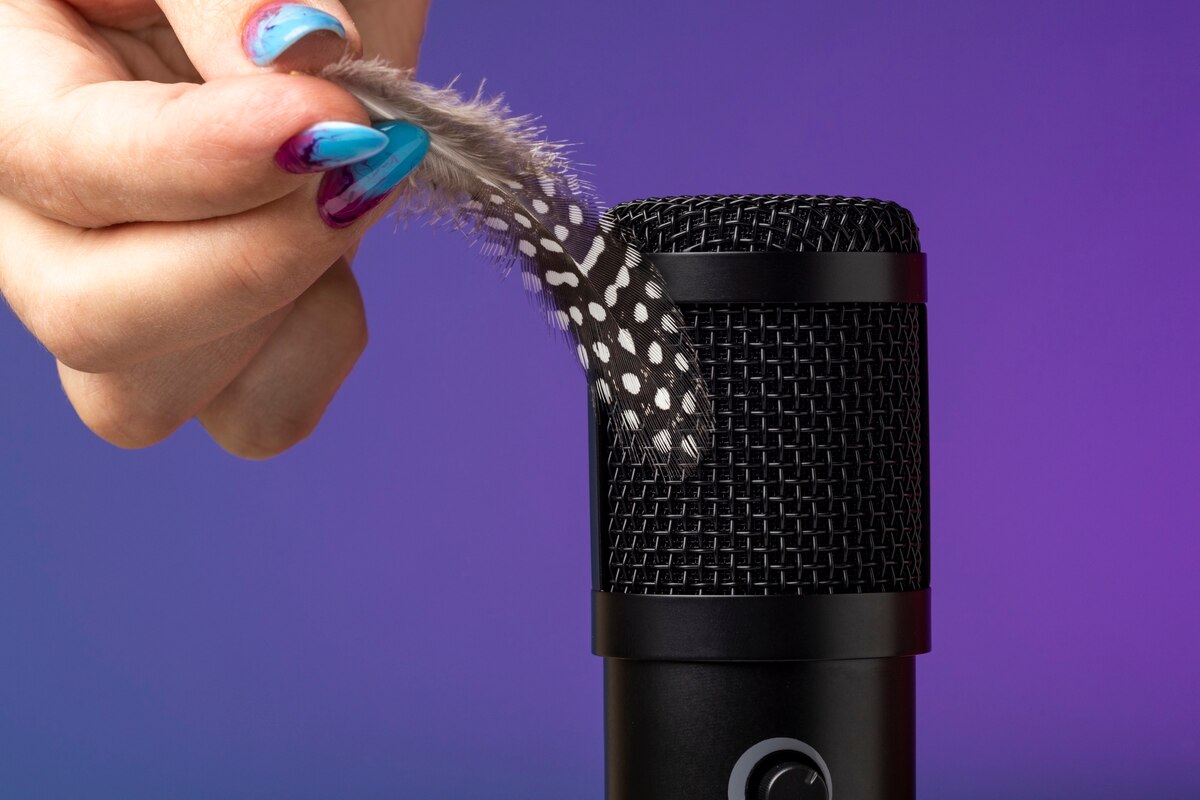Microphones are useful in many situations, from recording professionally to holding online talks. But sometimes they need help to do their jobs. Knowing about these common issues and how to fix them can help you quickly find and fix problems.
This piece will discuss the five most common microphone issues, such as low volume, background noise, feedback, chaotic sound, and devices that aren’t recognized, and give you valuable ways to fix them.
1. Low Volume Or No Sound
If your microphone has low volume or no sound, you can fix the problem and start recording or speaking correctly again. First, check the physical links. Make sure that the microphone is firmly linked to the right port on your computer or audio device.
If you’re using a USB microphone, plug it into a different USB port to ensure that the port isn’t broken.
Next, look at how the microphone is set up. To get to the recording tab on Windows, right-click the speaker symbol and select “Open Sound settings.” Then, click on “Sound Control Panel.”
Ensure your microphone is turned on and set as the usual device for recording. To choose your microphone on a Mac, go to System Preferences > Sound > Input.
If all of your links and settings are right, but the noise is still low, or there is no sound, the microphone may be broken. Check to see if the problem persists when you use the microphone with a different device. If so, the microphone might need to be fixed or changed.
2. Background Noise Or Distortion
Many things, such as noise in the surroundings, a bad microphone, or crosstalk, can cause background noise and distortion.
To reduce unwanted noise, move to a quieter place or use a microphone with noise-canceling features. The “p” and “t” sounds can also distort, but a pop filter can reduce them.
If the sound is distorting, check the microphone’s strength levels. Lowering the gain can reduce distortion, but be careful not to go too low, or the volume will drop.
If the distortion keeps happening, try a different microphone or change the levels in your recording software.
3. Feedback Or Echo
When your microphone picks up sound from your speakers and amplifies it again making a loop you get feedback and echo.
To stop echo move your speakers farther away from your microphone or turn down their sound. Headphones can also help because they block out the noise the microphone could pick up.
Try moving your microphone and speakers around to see if that helps with the noise. For example moving your speakers farther away or putting the mic closer to your mouth can help reduce noise. Also treat the sound in your recording room to minimize echoes.
4. Muffled Or Unclear Sound
A muddled or confused sound from your microphone could be caused by where it was placed , how it was set up or the quality of the microphone itself.
You can improve the sound quality by moving your microphone around. Putting it closer to your mouth can help you get better sound.
If the problem persists, check the settings on your microphone. It is important to make sure that the microphone is turned on and set as the usual recording device. If your microphone has settings that can be changed like a condenser microphone try different settings to get the best sound.
If you have tried moving and changing your microphone but are still hearing a muffled or unclear sound you should get a better microphone. A better microphone can pick up louder and make your recordings sound better overall.
5. Microphone Not Recognized By Device
If your device doesn’t recognize the microphone, it’s possible that the driver, connectivity, or hardware are broken. Start by seeing if there have been any driver changes.
Get the most up-to-date drivers for your microphone from the manufacturer’s website. After installing the drivers, turn your computer back on to see if the problem is fixed.
If the problem persists, check that your microphone works with your device and your computer’s operating system and that you’re plugging it into the right port or adapter. Check that the port isn’t broken if you’re using a USB microphone.
If the problems persist after you’ve checked the drivers and ensured they are compatible, the issue may be with the hardware. If the microphone doesn’t work with one device, try it differently. If the microphone still isn’t found, it might need to be fixed or changed.
Conclusion
It can be annoying when these ordinary microphone issues happen, but you can usually fix them quickly with the proper steps.
You can ensure that your mic is working properly and creating high-quality sound by checking your links, making changes to the settings, and thinking about the quality of your microphone. Feel free to ask if you need help figuring out how to fix the problem.
If you take the proper steps, you can keep your microphone in great shape and make a great sound.
